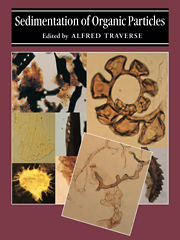Book contents
- Frontmatter
- Contents
- Editor's preface
- List of contributors
- I Introduction
- II Studies of palynosedimentation in modern environments
- III Reconstruction of late Cenozoic vegetation and sedimentary environments from palynological data
- 13 Quaternary terrestrial sediments and spatial scale: the limits to interpretation
- 14 Pollen and spores in Quaternary lake sediments as sensors of vegetation composition: theoretical models and empirical evidence
- 15 Paleoecological interpretation of the Trail Ridge sequence, and related deposits in Georgia and Florida, based on pollen sedimentation and clastic sedimentology
- IV Application of data on palynosedimentation to solution of geological problems
- V Appendix
- Index
14 - Pollen and spores in Quaternary lake sediments as sensors of vegetation composition: theoretical models and empirical evidence
Published online by Cambridge University Press: 06 January 2010
- Frontmatter
- Contents
- Editor's preface
- List of contributors
- I Introduction
- II Studies of palynosedimentation in modern environments
- III Reconstruction of late Cenozoic vegetation and sedimentary environments from palynological data
- 13 Quaternary terrestrial sediments and spatial scale: the limits to interpretation
- 14 Pollen and spores in Quaternary lake sediments as sensors of vegetation composition: theoretical models and empirical evidence
- 15 Paleoecological interpretation of the Trail Ridge sequence, and related deposits in Georgia and Florida, based on pollen sedimentation and clastic sedimentology
- IV Application of data on palynosedimentation to solution of geological problems
- V Appendix
- Index
Summary
Introduction
Virtually all applications of Quaternary pollen analysis, whether ecological, climatological, archeological, or stratigraphic, are ultimately concerned with inferring temporal changes in vegetation composition from pollen assemblages. Stratigraphic changes in pollen assemblages are assumed to record changes in vegetation composition, which in turn provide information about changes in species distribution, prevailing climate, human activities, and cultural resources. Within certain spatial and temporal realms, spatially separated sites contain similar stratigraphic changes in pollen assemblages. These similarities form the basis for classical pollen-stratigraphic zonation, and for chronostratigraphic correlation when independent evidence (e.g., radiocarbon dates) indicates that the zones are contemporaneous among nearby sites. The synchroneity derives from the pollen sequences at the individual sites having recorded the same or similar changes in vegetation composition.
The interest in studying pollen sequences that record past vegetational changes has led Quaternary palynologists to seek sedimentary deposits with good pollen preservation, and stable, continuous, datable deposition. Preservation must be sufficiently good that most pollen grains can be reliably assigned to morphotypes corresponding to extant plant taxa at or below the family level. A stable depositional environment is required to ensure that changes in pollen assemblages can be attributed to vegetational changes rather than depositional episodes. Continuous, independently datable records are desirable for an uninterrupted record of vegetational changes at a site, for comparison of records among sites, and for linking the pollen record to other kinds of data (paleontologic, paleoclimatic, geologic, archeologic, biogeographic).
Quaternary palynologists bring additional criteria to bear in evaluating pollen records and potential sampling sites.
- Type
- Chapter
- Information
- Sedimentation of Organic Particles , pp. 253 - 286Publisher: Cambridge University PressPrint publication year: 1994
- 83
- Cited by

